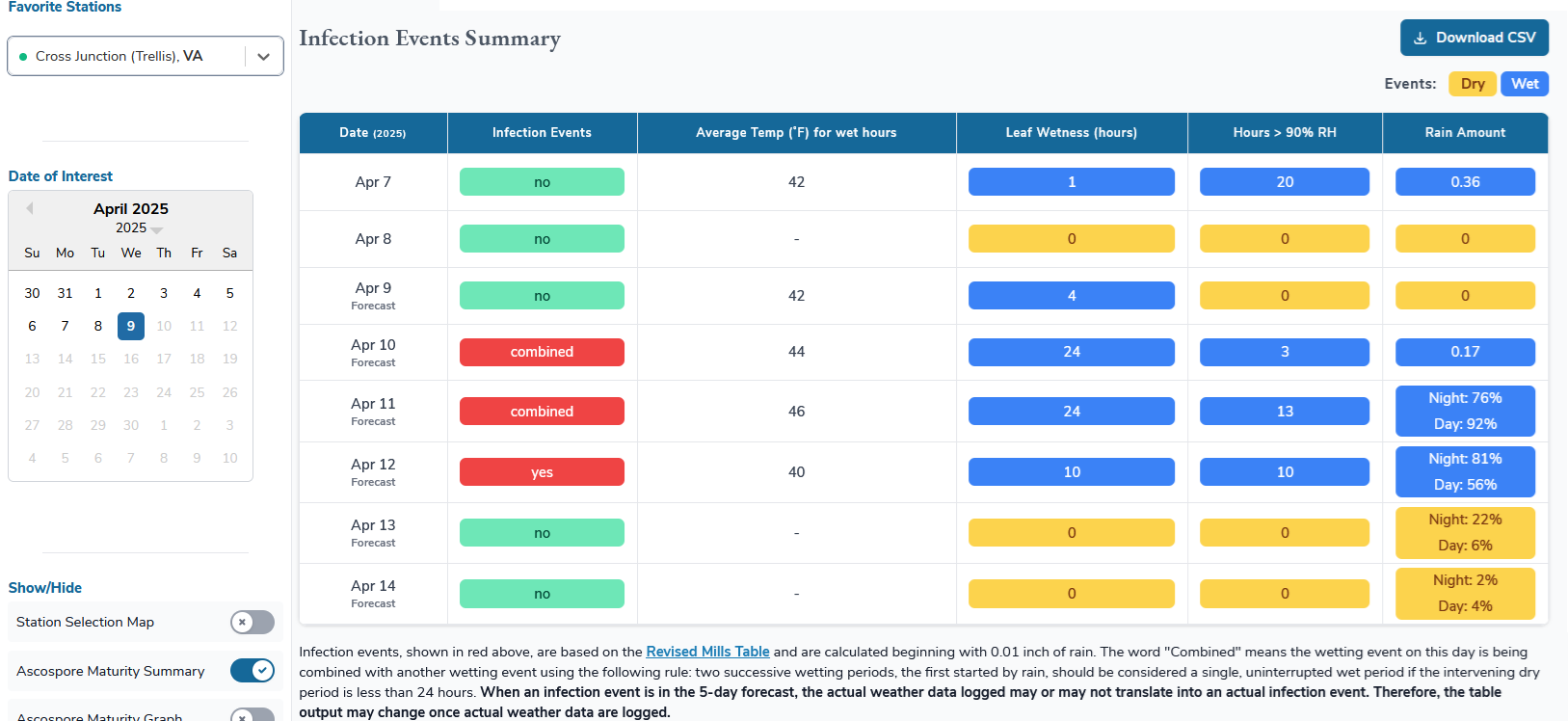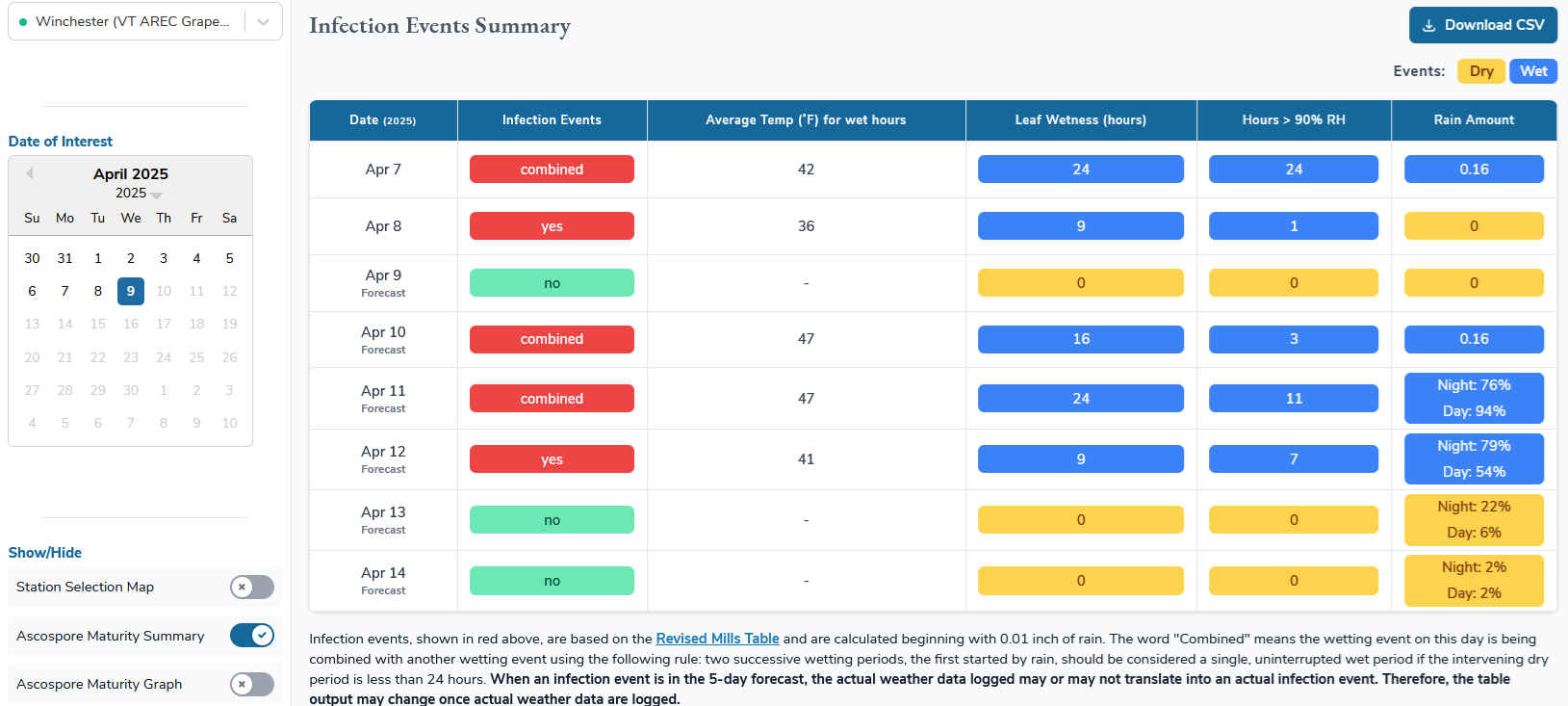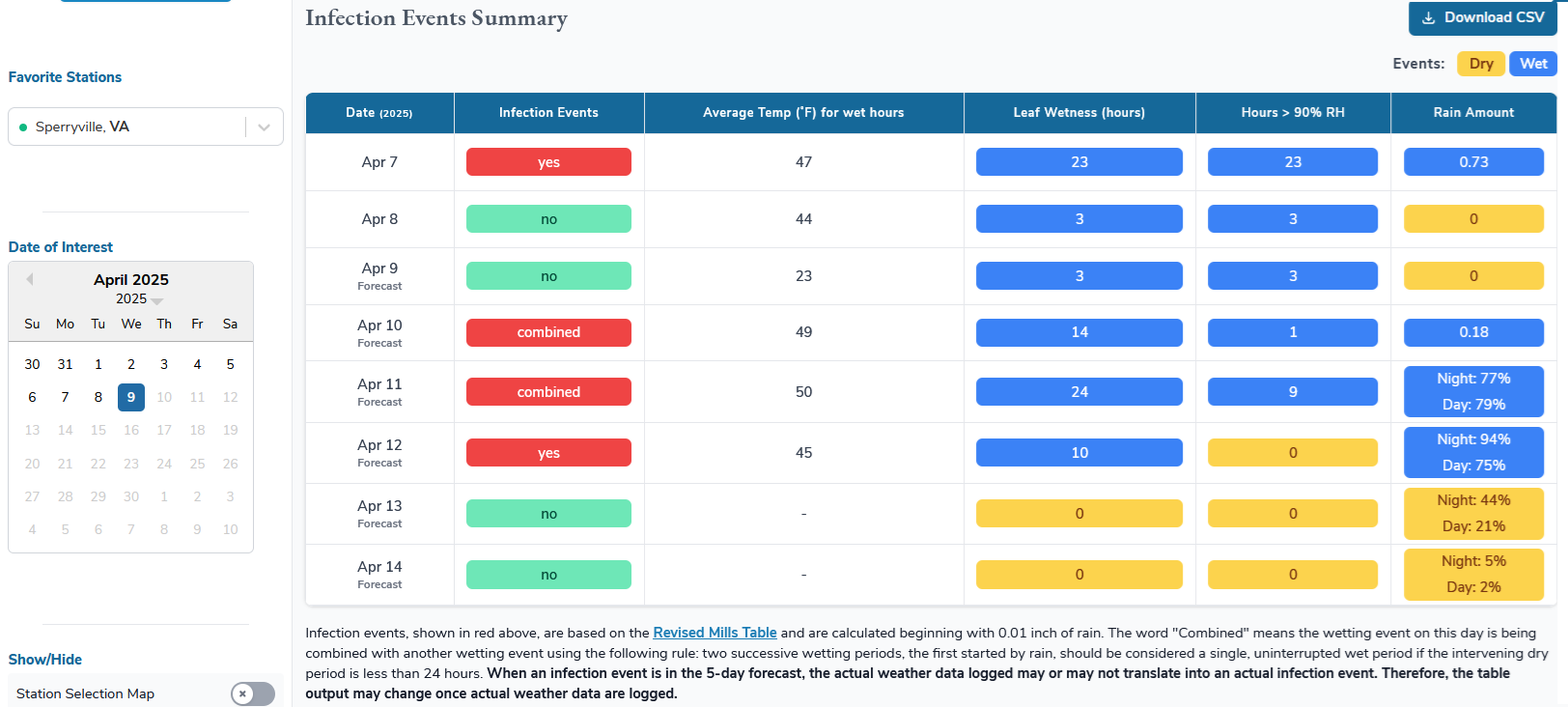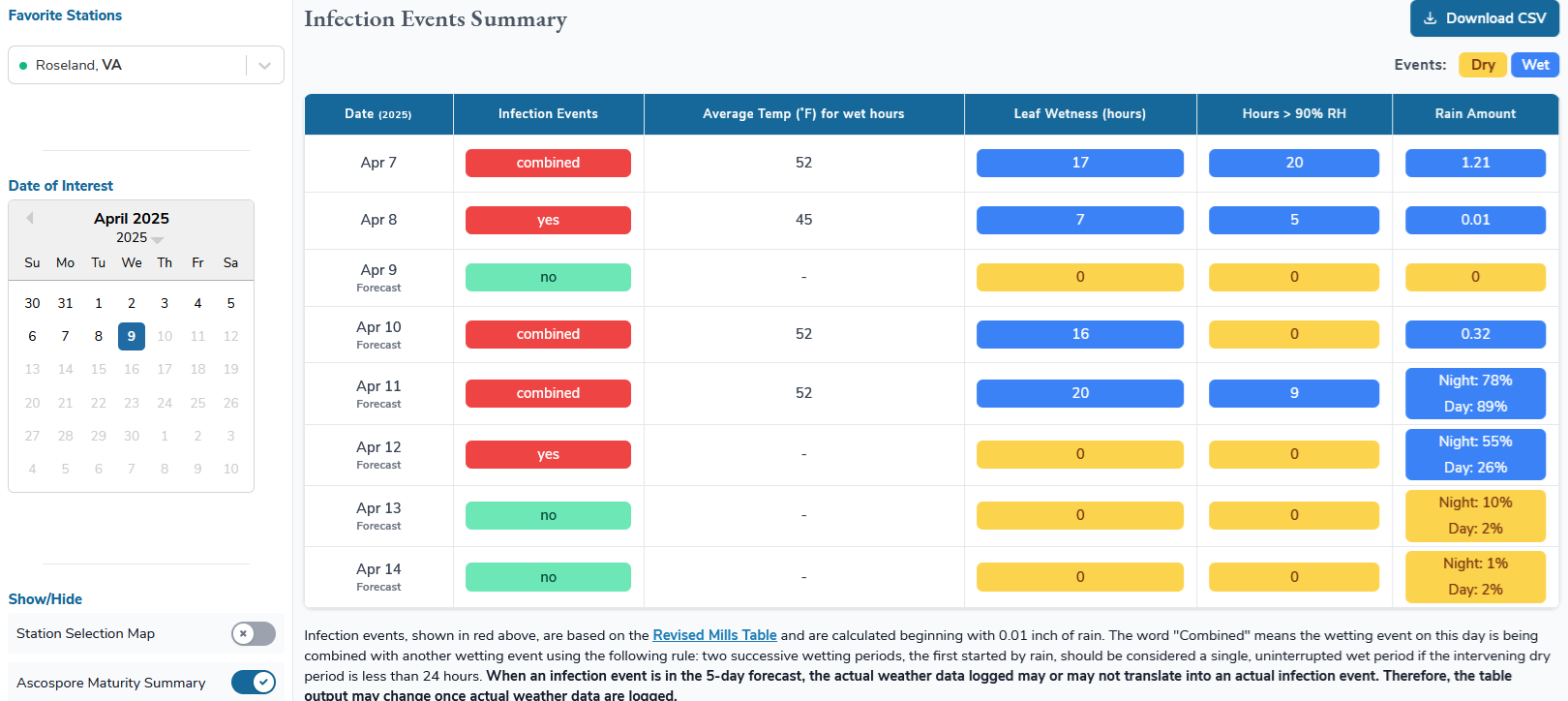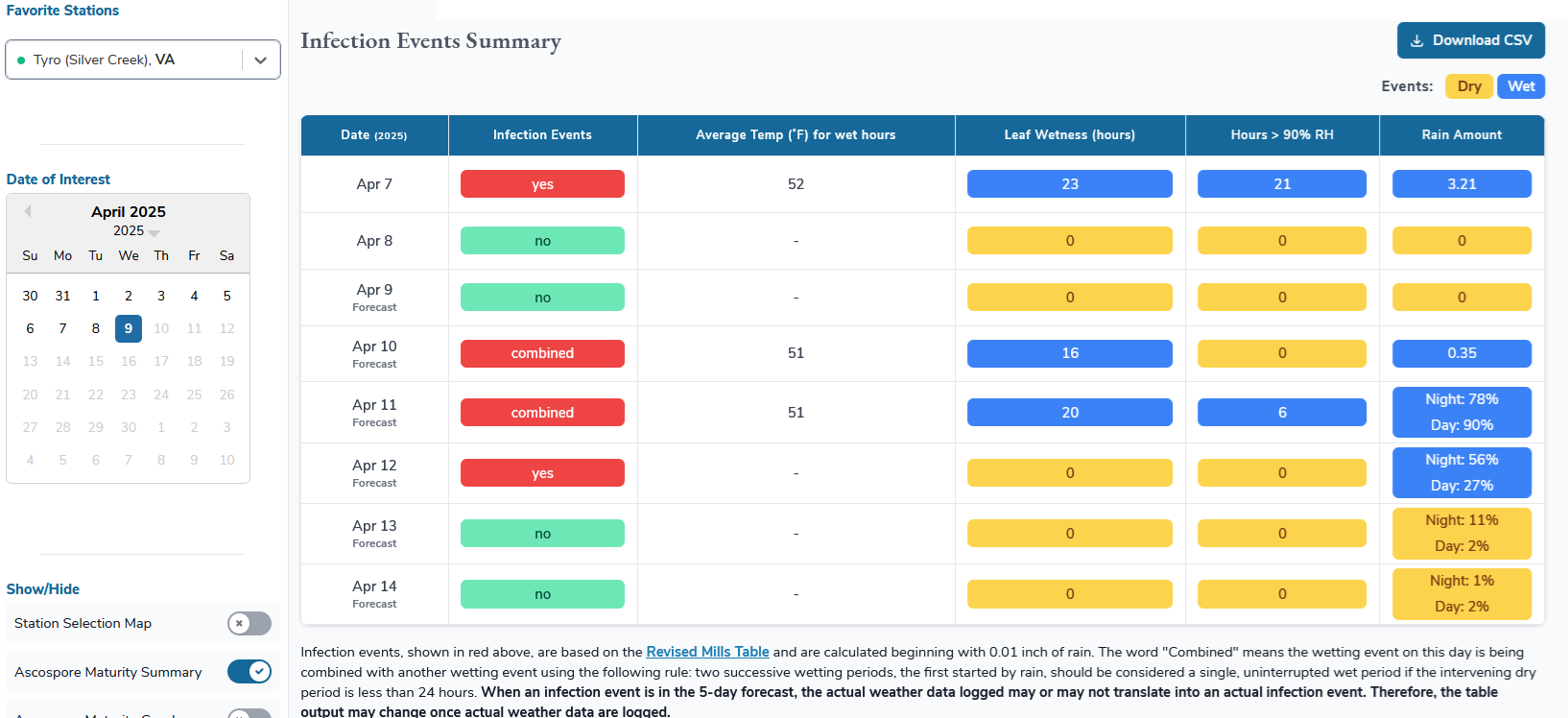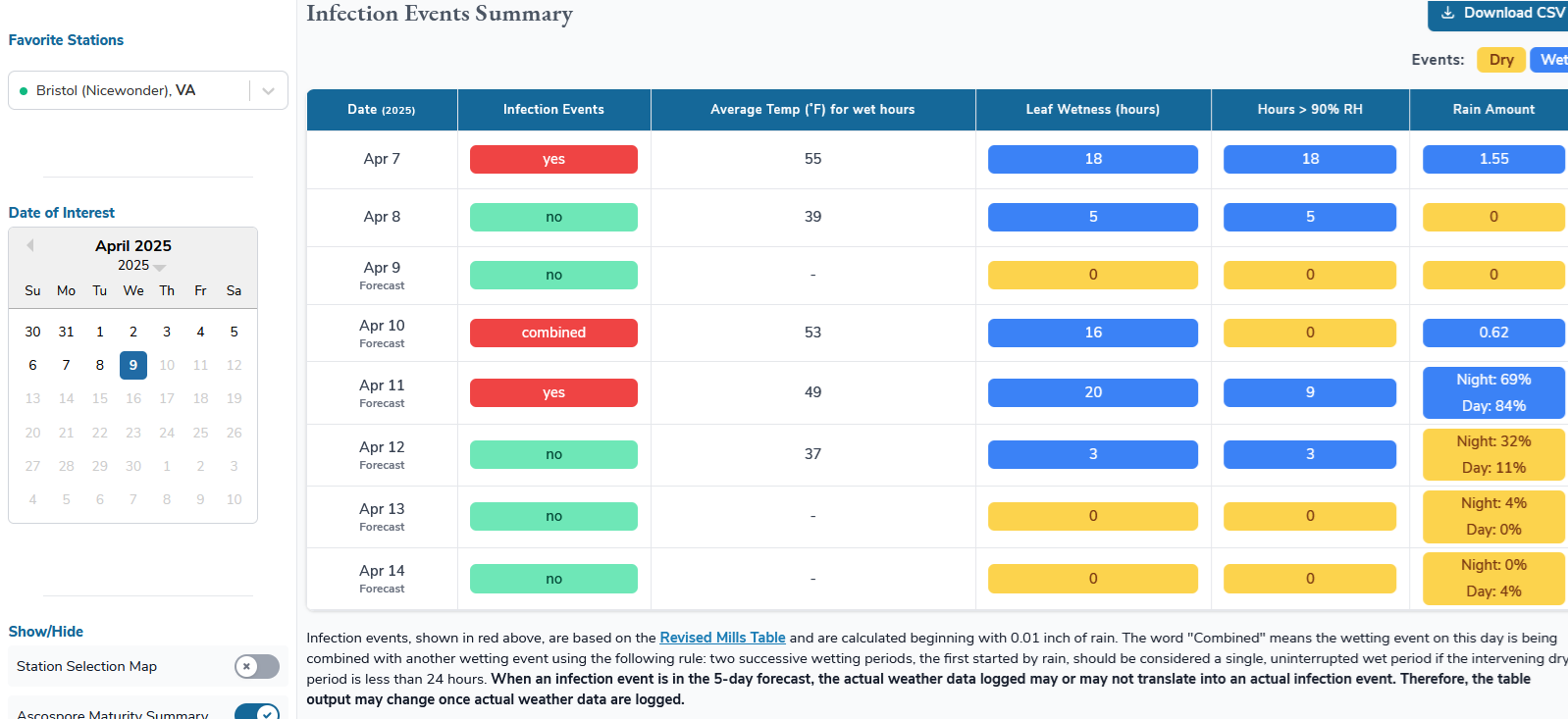(I) Severe Apple Scab and Rust Infections Predicted in NEWA Model for rains of 10-12 April; (II) Fire Blight Not a Risk Due to Low Temperatures
(I) APPLE SCAB, RUSTS, POWDERY MILDEW: If the weather forecast for 10 – 12 April becomes a reality, and we do get long hours of rain events and leaf wetness predicted, according to NEWA apple scab model we will get a severe apple scab and Juniper rust infection on 10 April into 12th April in all apple growing regions: Cross Junction, Winchester, Timberville, Sperryville, Tyro, Roseland, Bristol and many others. If you use RIMpro model you will be able to see how severe this infection and decide which fungicides to apply to control it. My recommendation would be, if you already use the DMI fungicide in mix with mancozeb before infections of 3- 7April, now you can use a top quality SDHI single site fungicide with mancozeb. The biggest advantage of the RIMpro apple scab model in comparison to the NEWA scab model, is in that RIMpro allows you to determine the actual percent of ascospores that will infect in a given rain event and this tell you the severity of that infection during these rain and approach selecting fungicides based on that. None of the models I have seen can do that. NEWA only shows you how much ascoposres will be released during a rain event. Thus by seeing the severity of infection you expect, you can gauge your response by selection of fungicides you will use.
RIMpro model is dynamic and calculates the destiny of ascospores from hour to hour. It represents the fate of ascospores of apple scab fungus Venturia inaequalis from maturing in the leaf litter, ejection into the air, germination during rain, and all the way up to infection success or not. In the spore population models like the RIMpro apple scab model is, the infection biology is split up in a chain of subsequent processes for each ascospore group, and in each sub-process (release, germination, infection) the latest scientific knowledge on ecology, biology, and epidemiology about that sub-processes is applied and used in the model output prediction. RIMpro is a great tool for efficient scab management and used in commercial orchards in over 40 countries worldwide.
For the oncoming infection, a combination of Excalia, or Miravis, or Sercadis or Fontelis plus mancozeb would be necessary before the rain events on 10 April. Keep in mind that the SDHI (FRAC Group 7) fungicides I state above will NOT be effective for Juniper rusts but will be very effective for powdery mildew control as well. You can use the SDHIs when the rust is not a very big concern for your location, so if that is the case add 10-16 fl oz/100 gal of LI700 or 4 oz. of WideSpread Max to it as this boosts the absorption of SDHI-s into the green tissue and allows longer residual protection throughout the rain events.
Where Juniper rusts that infect apple are a top concern besides scab, DMI fungicides like Inspire Super, Procure, Rally, Rhyme, Cevya, Sonoma and others in mix with mancozeb should be applied before the rain events of 10-12 April. DMI-s are the most effective systemic materials for control of both apple cedar rusts, powdery mildew and apple scab fungi. DMI-s are especially needed as we have seen the galls on Junipers become gelatinous and orange, meaning they are releasing the spores that infect apple leaves and fruit, during the severe rains we had 3-7 April. From now on, until 2nd cover make sure you add a DMI (FRAC 3) fungicide every 14 days in mix with mancozeb. In between the 14 days DMI mix with mancozeb you can use SDHI-s in mix with mancozeb for apple scab control. Systemic fungicides are needed because the leaves will rapidly expand in size in the next several weeks,, with warm weather, and it is the best practice to have a systemic fungicide in the green tissue while it expands during the warm rains. Dilution of fungicide residue is not only caused by rain, but with the leaf tissues expansion as well. Be vigilant and keep looking at the prediction models every day, twice a day (morning and evening) to see if any of these predictions will change and apply your disease control materials accordingly. A good spray period will be 8 – 9 April before the rains on the 10-12 April start, because the closer you are to the infection period you would achieve maximum coverage of the expanding green tissue.
(II) FIRE BLIGHT: Based on the weather forecast as it stands now until 14 April, due to low temperatures for showers predicted in NWS on 10-12 April we do not expect infection by fire blight in Virginia. However, keep looking at the models as the infection prediction can change in a less then 24 h notice due to weather forecast instability. Hence please keep looking at the NEWA’s EIP Model and examine the outputs daily. If the EIP value changes to 100 and the color of the box changes to dark red indicating “Infection”, find a good window to apply streptomycin on any open pear and apple flowers in your orchard.
